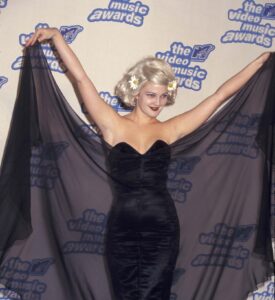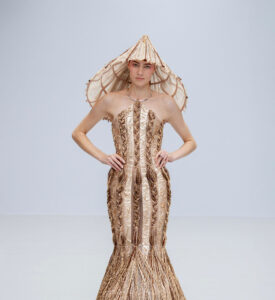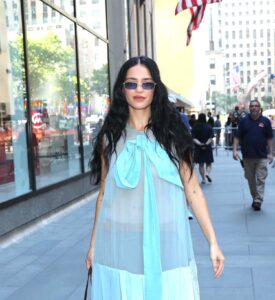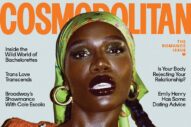I must say that I think this is not because of all kind of Photoshop chicanery, but because Madonna IS very smooth right now. (I also need to sidebar here, because people always get defensive about Madonna, to note that I have a LOT of love for Madonna, who was very important to me when I was young. She has, however, said a lot of wild stuff over the past few years. I do not know what has happened to Madonna to make her so stubborn about the Covid vaccine, but it’s disappointing.)
The interview is with Jeremy O. Harris, the Tony Award-nominated playwright of Slave Play, and it’s actually a very, VERY interesting read. Madonna, at least, never does worry about what people will think about what she says, and it’s refreshing to read an interview with an artist where her PR person isn’t leaping in front of the recorder. I could have snipped out tons of segments out of it, but I went with this one:
JOH: One of the lines you have that I’ve thought about a lot is, “The most radical thing I ever did was to stick around.” And when I hear that, is that the most radical thing you can do? Or would it have been really radical if you just disappeared, and just never shown back up after Ray of Light.
M: You mean die like everybody else?
JOH: Well, not die but just go into hiding, like J.D. Salinger in a forest in the woods.
M: That could have been, but I didn’t want to make homeopathic medicine in the woods like J.D. Salinger did.
JOH: For you performing is to fail, working to death, something that feels deeply radical. Because, outside of Yvonne Rainer and Martha Graham, I can’t think of any women after 60 performing live for people consistently. And even those women didn’t perform at the level that you’re performing. Does that scare you at all?
M: I don’t even think about my age, to tell you the truth. I just keep going. Even when I performed almost my entire tour in agony, I had no cartilage left in my right hip, and everyone kept saying, “You gotta stop, you gotta stop.” I said, “I will not stop. I will go until the wheels fall off.” And it was COVID that shut us down in Paris when we still had 10 days left of shows and I was going to keep going. I didn’t care how much it hurt. But to your point, I don’t ever think about the limitations of time and when I should be stopping. I only think about it when extremely ignorant people say to me, “Don’t you think you’ve earned the right to just sit back and enjoy all of your success and all things that you’ve achieved and retire?” Not retire, no one would dare say that word to me. I say to them, “Wait a second. Why do you think I do what I do?” Why do you do what you do? Do you have a stop date for yourself?
But really, click over and read the whole thing. It’s a very compelling conversation — I certainly don’t agree with all of it, and some of of it is probably going to be controversial, but it’s thought-provoking. (I do think it’s a bit hard to follow in parts if you haven’t seen Madame X, which I have not.) The piece also opens with a statement from the photographer, Steven Klein (who has worked with Madonna many times), explaining their inspiration. I think this is so interesting; I wish more magazines included this kind of background. He wrote:
“This photo essay was inspired by a shoot that Marilyn Monroe did with photographer Bert Stern titled “The Last Sitting.” They shot at the Bel Air hotel in 1962, before she passed away. What was supposed to be a three-hour sitting, turned into a three-day whirlwind, working night and day. Drinking, laughing, shooting photos, editing, sleeping, and then taking more photos–a private affair between two artists which rarely happens anymore. We were not interested in recreating the images exactly but more importantly, we wanted to explore the relationship between photographer and subject. Both the friendship and the artistic process, and how art can imitate life and vice versa. When I sent Madonna the photos she was really taken by the incandescent fragility of Marilyn at that moment in her life. We decided to find a hotel suite and try to capture the liaison between a star and the camera, the mystery, and magic of this creative collaboration. We hope we have done justice to the great work of Bert Stern and Marilyn Monroe.”
(If you’re not familiar with that shoot, you can see some of it here. [You probably are actually familiar with it even if you don’t recognize the name, it’s super famous.]) This also makes great sense in terms of Madonna as an artist — so much of Madonna’s earlier oeuvre is visually referential of Marilyn, which the video for Material Girl being probably the most obvious example.





















